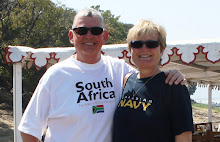 We heard recently from long time travel companions that they were planning a trip to Asia and that Laos would be part of their itinerary.
We heard recently from long time travel companions that they were planning a trip to Asia and that Laos would be part of their itinerary. That got me thinking about our own introduction to Laos when we visited the capital city of Vientiane and the ancient royal capital of Luang Prabang several years ago.
The old capital lies sleepily on the banks of the Mekong river and is home to 33 Wats (or temples) and over 500 monks.
Luang Prabang has a fairy tale quality about it.
One of my lasting memories of our stay in the old capital was the daily ritual just after dawn when the monks walk solemnly from their monasteries to collect alms. Built in 1560, the monks' procession begins from Wat Xieng Thong where Lao kings were crowned and cremated. Beautiful murals constructed from glass fragments adorn the city's most famous temple.
 Statues of Buddha in the Calling for Rain attitude line the Chapel of the Funeral Chariot.
Statues of Buddha in the Calling for Rain attitude line the Chapel of the Funeral Chariot. 
Hmong embroidery and glass inlaid mosaics depicting village life in the hill tribes are very striking and form a rich tapestry.
Local women kneel at the pavement's edge holding containers of sticky rice wrapped in banana leaves while men (and the few visitors present) stand barefoot. As the monks pass we drop portions of rice into their alms bowls. The monks have a dreamy, distant look on their faces.
There were so many wonderful things to buy but sadly I had to be dragged away from this shopping extravaganza, Lao kip and Thai baht unspent, because apparently we were well over the airline's meagre weight allowance. Never mind, I had my three-headed elephant Airavata. This symbol is associated with the old Lao Kingdom and the country's former flag which expressed the ancient name of the country "land of a million elephants".
As the light fades, the fast-moving Mekong's colour changes from milk to dark chocolate beckoning one to spend a day on the river and enjoy perspectives gained through watching life along the river bank in what seems to be a bygone age.



No comments:
Post a Comment